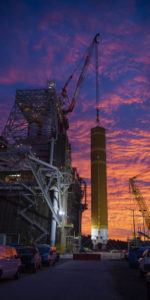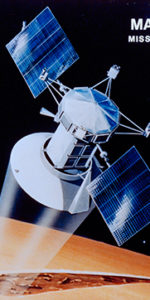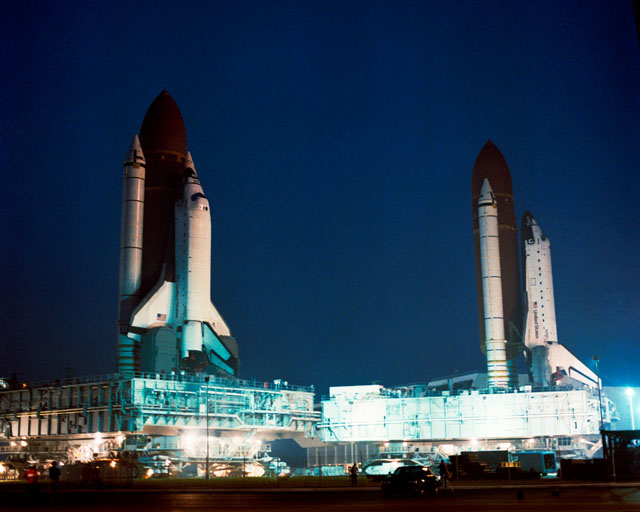
Thirty years ago today, literally like passing ships in the night, a pair of Space Shuttles inched past each other on the Kennedy Space Center (KSC) crawlerway; one heading for the launch pad, the other rolling back to the cavernous Vehicle Assembly Building (VAB). It was one of the shuttle program’s most impressive and unforgettable photo-ops.
Both Columbia and Atlantis were fully stacked onto their respective External Tanks (ETs) and Solid Rocket Boosters (SRBs), ready for their respective missions: a many-times-delayed ultraviolet astronomy flight and a classified Department of Defense assignment. But sadly, neither ship was any nearer to launching than the other. It was 9 August 1990 and the shuttle program—newly back on its feet after the calamitious loss of Challenger—had found itself grounded for months by a seemingly intractable series of fuel leaks within the Main Propulsion System (MPS) of both vehicles.
By the late spring of 1990, three shuttle missions had already taken place, with as many as six more expected to mark out the first year of a new decade. Had this figure been achieved, it would have equaled 1985 with the maximum number of shuttles ever launched in a singular calendar year. However, it was not to be, and the second half of 1990 became known for its grounded missions, its frustrated astronaut crews and a delicately assembled shuttle flight manifest cast into disarray.
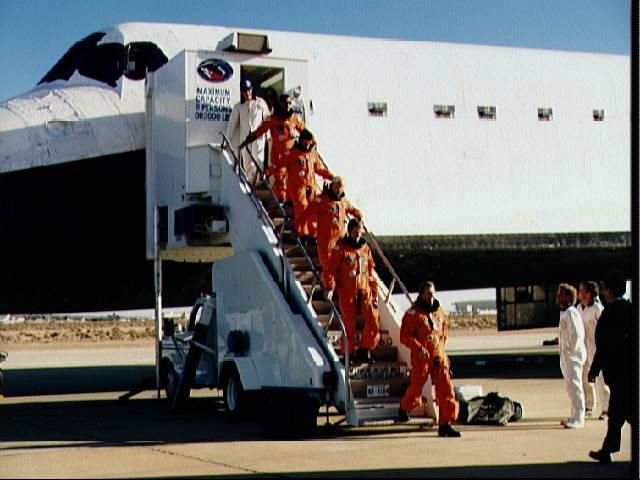
When Discovery touched down at Edwards Air Force Base, Calif., on 29 April, following the triumphant deployment of NASA’s scientific showpiece—the Hubble Space Telescope (HST)—the next scheduled flight was that of her sister Columbia, slated to launch no sooner than 16 May for the 10-day STS-35 mission, carrying the ASTRO-1 payload of ultraviolet astrophysics instruments. This flight—in its original incarnation as “Mission 61E”—would have been the next flight after Challenger and, planned for March 1986, would have formed part of the vanguard of our observations of the most recent visitation of Halley’s Comet to the inner Solar System. More than four years later, with the fabled comet long gone, ASTRO-1 was combined with another instrument, the Broad Band X-Ray Telescope (BBXRT), and was expected to reveal significant new insights into the nature and evolution of the cosmos at ultraviolet and X-ray wavelengths.
On the heels of STS-35, Atlantis would fly the classified STS-38 mission for the Department of Defense in July, following by Columbia’s STS-40 Spacelab Life Sciences (SLS)-1 in September, the eagerly anticipated launch of the Ulysses solar explorer aboard Discovery on STS-41 in October, the deployment of the Gamma Ray Observatory (GRO) by Atlantis in November, and, lastly, the International Microgravity Laboratory (IML)-1 payload, aboard Columbia, in December. Under this scenario, Columbia would fly no fewer than four times in 1990, creating a new record for herself and tying with an equivalent number of missions accomplished by her sister Discovery in 1985.
Then came the issue with the hydrogen disconnect valves.
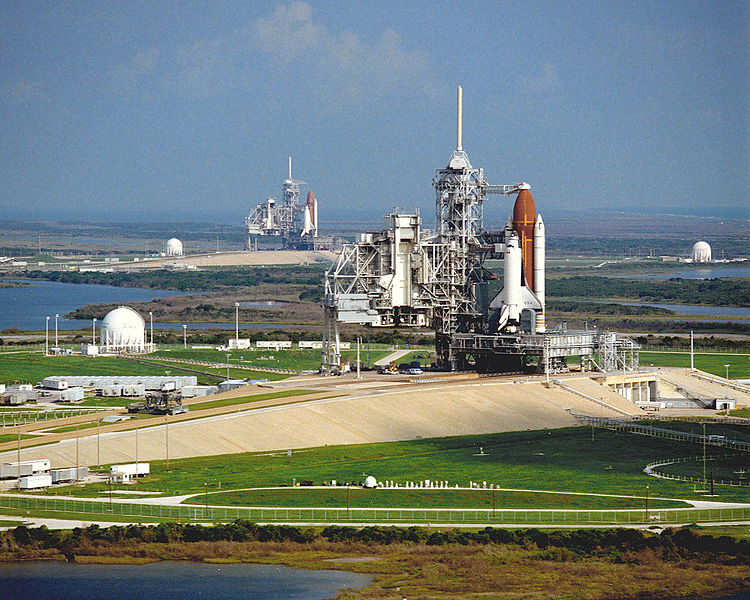
Deep within the belly of each shuttle were a pair of 17-inch-wide (43 cm) propellant lines, through which liquid oxygen and hydrogen flowed from the ET into the cluster of three main engines. Both “sides” carried mechanical disconnect fittings and shortly before the separation of the ET—about eight minutes after launch—a pair of flapper valves were commanded shut by pneumatic helium pressure to prevent further propellant discharge and contamination. The criticality of the disconnect valves was acute: inadvertent closure during powered flight would have prevented propellant flow from the ET and precipitated disaster. And in the days, weeks and months before STS-35, they took center-stage as one of the most difficult engineering challenges ever to face the shuttle team.
Before each mission, a Flight Readiness Review (FRR) scrutinized all pertinent documentation, before formally reaching an agreement on a target launch date. At the beginning of May 1990, Columbia was provisionally scheduled to fly on the 16th, but a problem was noted with a proportioning valve on her Freon coolant loop, requiring replacement. A second review was convened and settled on 30 May for launch. By this time, the delays were expected to have a significant effect on the remaining flights of the year. Then, during the lengthy process to load liquid hydrogen into the ET, a tiny leak was detected, close to the Tail Service Mast (TSM) on the Mobile Launch Platform (MLP). Further investigation revealed a much more extensive—and far more worrisome—leak, apparently coming from the disconnect hardware in Columbia’s belly.
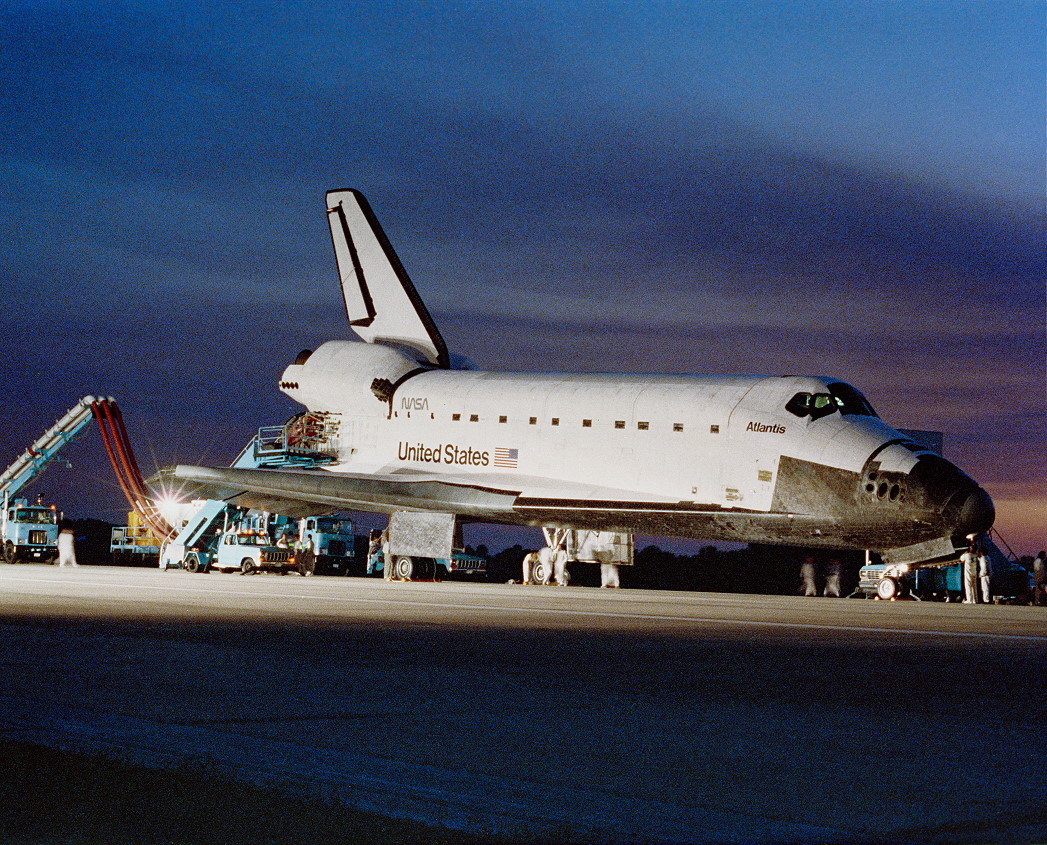
“We got to about T-4 hours, when they start the fast-fill of the hydrogen,” recalled STS-35 astronaut Jeff Hoffman in his NASA oral history. “We had had the party for the launch guests. Everybody comes down; that’s a tradition. Then there’s another nice tradition, where we would go out and stand on one side of the trench, out by the launch pad, and the buses would come and the families and friends would be on the other side, so we could wave at them.” With the discovery of the leak, the launch attempt was immediately called off and the ET was emptied and inerted.
A few days later, on 6 June, a “tanking test” was conducted to identify the exact location of the leak. It soon became clear that historic Pad 39A was not an appropriate place for exploratory work to be undertaken, and on the 12th the STS-35 stack was rolled back to the cavernous VAB. Columbia was removed from the stack and returned to the Orbiter Processing Facility (OPF) for repairs on the 15th. Launch was provisionally rescheduled for mid-August. The shuttle “side” of the disconnect hardware was replaced with a set borrowed from the new orbiter, Endeavour and apparatus for the ET “side” arrived shortly thereafter from its assembly facility at Michoud in New Orleans, La.
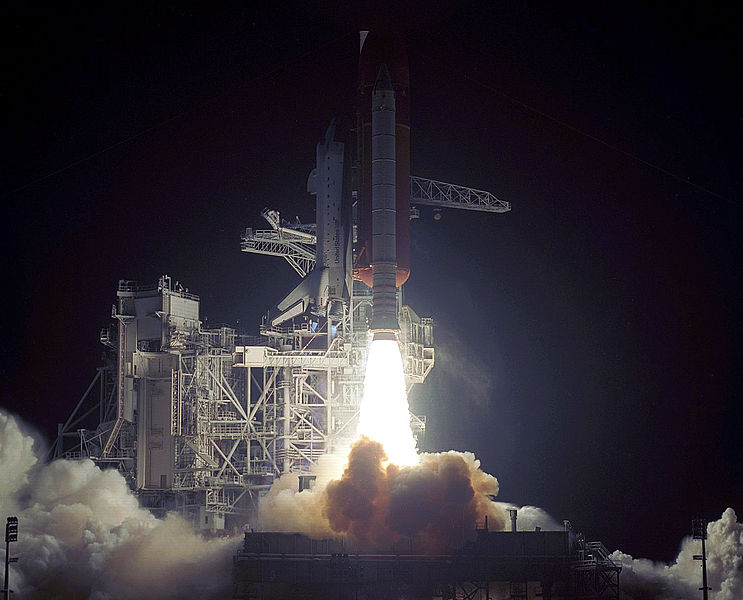
As this work was being undertaken, Atlantis progressed smoothly—or so it seemed—toward her own launch in July. As a precautionary measure, shortly after the STS-38 stack arrived at Pad 39A on 18 June, NASA performed a tanking test on Atlantis, to verify that she was not similarly affected. Two modes of propellant loading were followed; a “slow-fill” chilled down the pipework and the structure of the tank, so that when cryogenic hydrogen was pumped in at a higher rate, known as the “fast-fill”, it would not boil and generate excessive amounts of gas. On the 29th, liquid hydrogen was duly pumped into her ET and to engineers’ dismay the same problem appeared: After the fueling process moved from “slow-fill” to “fast-fill”, concentrations of gas were found in the vicinity of her disconnect hardware. It was small and was described by NASA as “both temperature and flow-rate-dependent”, but the agency was convinced that the two leaks in Columbia and Atlantis represented nothing more than coincidence.
To identify the source, more instrumentation was fitted around the disconnect and a second tanking test was performed on 13 July. Sealants were added to stop the leak, but a third test on the 25th revealed that the problem remained.
So it was that in the pre-dawn darkness of 9 August, the STS-38 stack rolled back to the VAB, providing a unique photo opportunity in the process, as the STS-35 stack passed it on its way back out to Pad 39A. And although it was just one of many “rollbacks” conducted during the 30-year shuttle era, the visibility of two vehicles in such close proximity to one another afforded a photo-opportunity which has gone down in the annals of spaceflight lore. Even after 9 August 1990, neither Columbia or Atlantis were by any means out of the woods and their problems would persist in the fall. But before the end of 1990, both STS-38 and STS-35 would have flown—and flown successfully—whilst providing a unique reminder that the shuttle remained fragile in its flexibility and was still very much an experimental flying machine.




